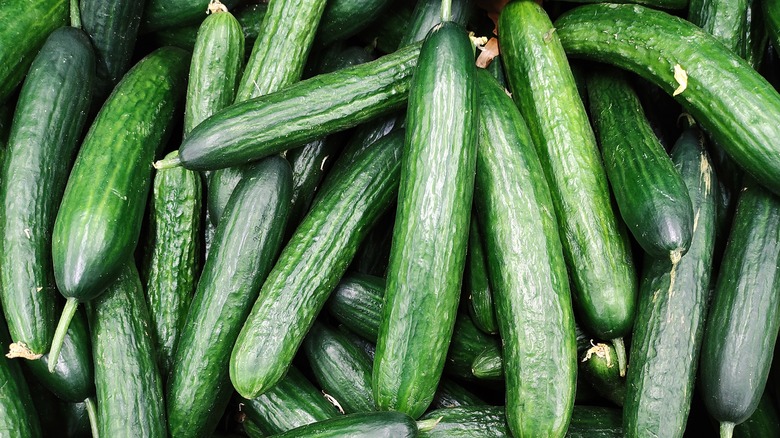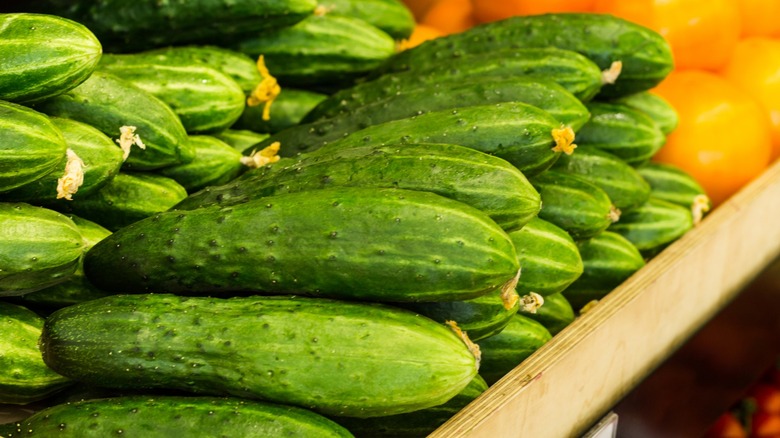We Finally Know If Cucumbers Are Fruits Or Vegetables
With their refreshing taste and satisfying crunch, it's easy to understand the popularity of cucumbers. Whether you eat them raw or use cucumbers to infuse a pitcher of chilled water, their mild sweetness just brightens up the palate. Because of their versatility, you might have wondered how cucumbers are classified. Fruits are often used to infuse water with sweet flavor while veggies are usually cooked in savory stir-fries and stews, yet cucumbers can be used in both cases. So, are they fruits or vegetables? Well, the answer isn't as straightforward as you might expect.
Botanically speaking, cucumbers are fruits based on their physiological characteristics. Fruits contain seeds (which cucumbers have) and develop from a plant's flowers (which is how cucumbers grow). However, these technicalities do not really matter in the culinary world. Among chefs and dietitians, the classification of produce is more or less defined by their purpose. If something is soft and works well in sweet desserts and breakfast items, it's a fruit. If it's not so sweet, has a tougher texture, and is typically used in savory dishes, then it's a vegetable.
By these culinary standards, cucumbers are vegetables, hence their location in the produce section. Regardless of their classification, cucumbers are incredibly healthy for you. Since they are made up of 95% water, simply snacking on raw cucumber slices helps boost your hydration. They also contain vitamin K, which, together with the small amount of calcium cucumbers offer, promotes bone health.
Classifying produce has always caused confusion
Cucumbers aren't the only form of produce that straddles both culinary categories. Tomatoes and pumpkins are also botanically fruits but are generally considered vegetables. These categorizations are helpful to researchers and dietitians in their creation of dietary guidelines that enlighten the public on which produce to eat and how much is necessary to meet nutritional needs. However, during the late 19th century, classifying something as either a fruit or a vegetable became the subject of a lengthy legal battle.
Congress passed the Tariff Act in 1883, which imposed a 10% tax on vegetables (but not fruits). In 1886, the Nix family, who were in the tomato-selling business, tried to declare their juicy red goods as fruits at the New York port to avoid paying the tariff. However, port collector Edward L. Hedden disagreed and still charged them with the 10% tax. The disagreement led to the Nixes suing Hedden the following year. After six years of legal battle, Supreme Court Justice Horace Gray finally legally declared tomatoes — and, by proxy, cucumbers — as vegetables in 1893.
Although the judge agreed that tomatoes are botanically fruits, "just as are cucumbers, squashes, beans, and peas," he concluded in his decision statement that they're all vegetables. He further described them as "usually served at dinner in, with, or after the soup, fish, or meats, which constitute the principal part of the repast, and not, like fruits generally, as dessert" — which is pretty much identical to how the culinary world views them.

